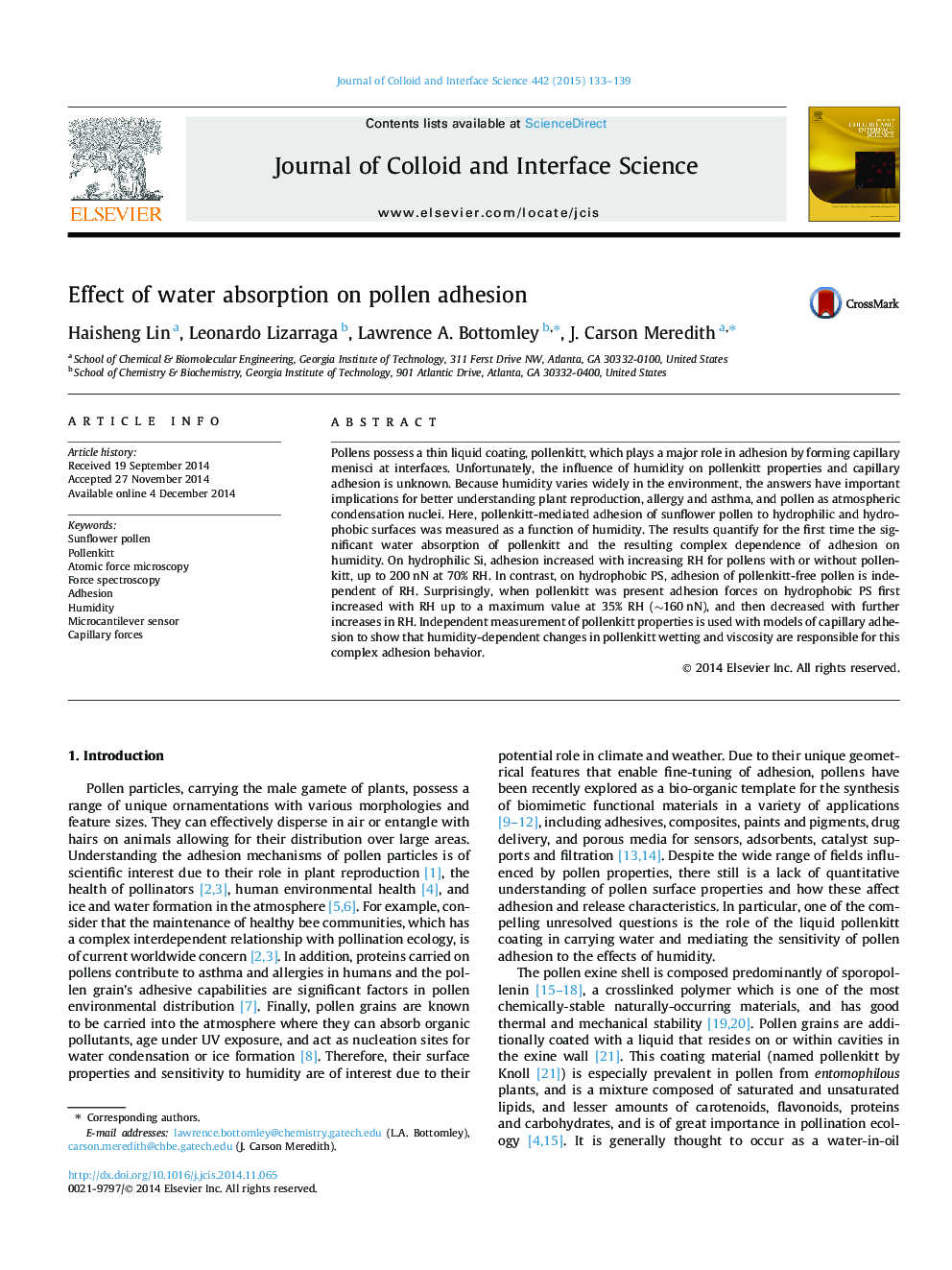| Article ID | Journal | Published Year | Pages | File Type |
|---|---|---|---|---|
| 606859 | Journal of Colloid and Interface Science | 2015 | 7 Pages |
•Pollenkitt is a viscous coating on many pollen grains.•Pollen absorbs moisture; uptake is greater for grains with pollenkitt.•Adhesion of sunflower pollen to surfaces was measured as a function of humidity.•Pollenkitt gives pollen the ability to tune adhesion with changes in humidity.
Pollens possess a thin liquid coating, pollenkitt, which plays a major role in adhesion by forming capillary menisci at interfaces. Unfortunately, the influence of humidity on pollenkitt properties and capillary adhesion is unknown. Because humidity varies widely in the environment, the answers have important implications for better understanding plant reproduction, allergy and asthma, and pollen as atmospheric condensation nuclei. Here, pollenkitt-mediated adhesion of sunflower pollen to hydrophilic and hydrophobic surfaces was measured as a function of humidity. The results quantify for the first time the significant water absorption of pollenkitt and the resulting complex dependence of adhesion on humidity. On hydrophilic Si, adhesion increased with increasing RH for pollens with or without pollenkitt, up to 200 nN at 70% RH. In contrast, on hydrophobic PS, adhesion of pollenkitt-free pollen is independent of RH. Surprisingly, when pollenkitt was present adhesion forces on hydrophobic PS first increased with RH up to a maximum value at 35% RH (∼160 nN), and then decreased with further increases in RH. Independent measurement of pollenkitt properties is used with models of capillary adhesion to show that humidity-dependent changes in pollenkitt wetting and viscosity are responsible for this complex adhesion behavior.
Graphical abstractFigure optionsDownload full-size imageDownload high-quality image (73 K)Download as PowerPoint slide
